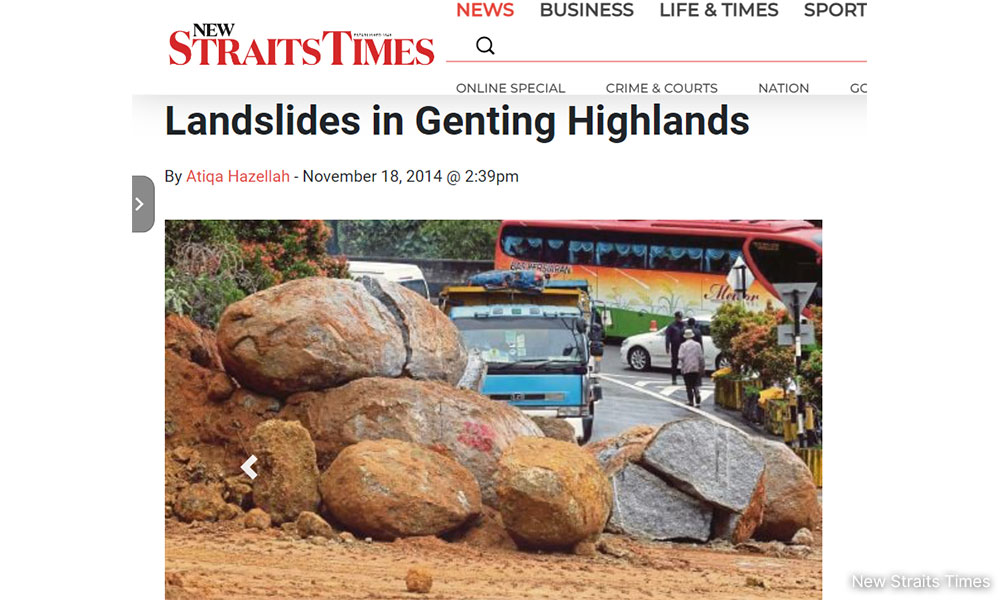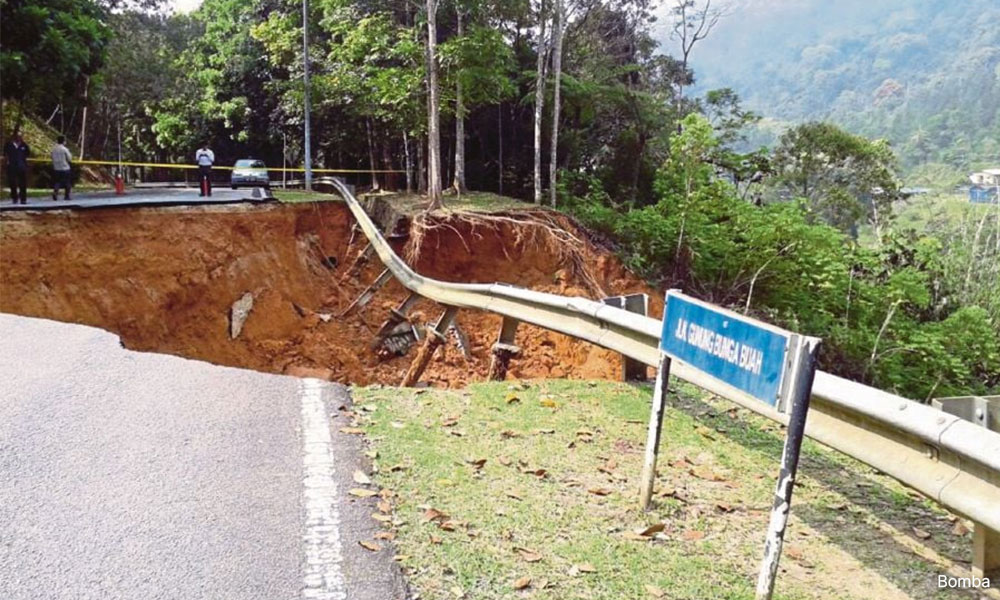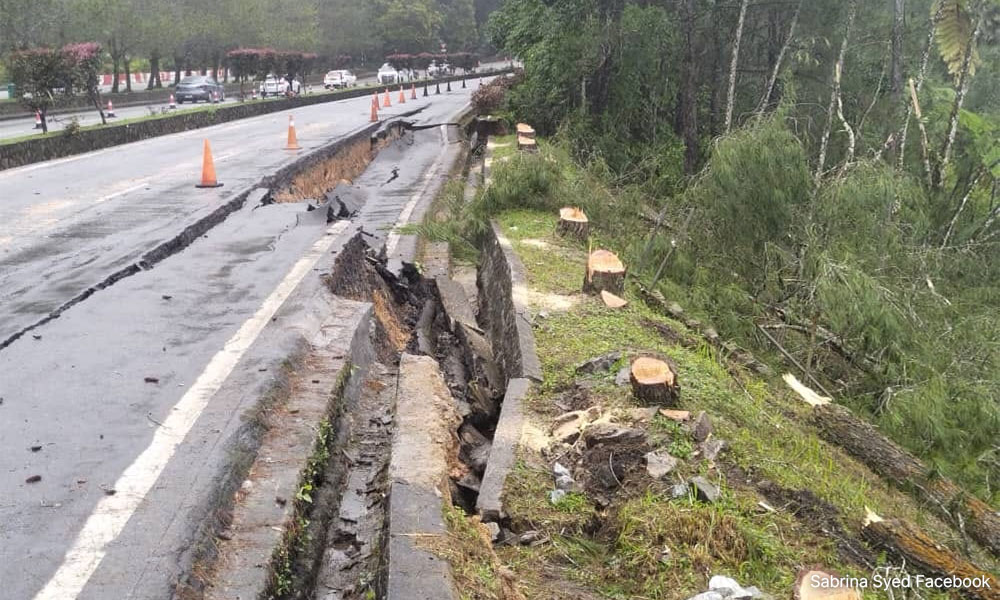Landslides on the road heading up to Genting Highlands, Pahang, have been recurring incidents over the years, at least since 1995 when 20 were killed.
In fact, the last incident happened five days ago when part of the road near the Gohtong Memorial Park gave way in a landslide, less than 15km from the fatal disaster this morning.
While the Dec 11 incident left no injuries, the rising death toll in today’s incident at a glamping spot indicates how it could be as severe or even worse than the 1995 incident within a 20km radius.
At least eight have been declared dead, while a total of 96 people were affected by the landslide at Father’s Organic Farm, a popular campsite there today.
In the 1995 incident in Genting Sempah, motorists were buried in their cars when tons of earth tumbled onto the road leading up to Genting Highlands.
A total of 19 vehicles were swept into a ravine, with water still gushing from the hills hours after a disaster, which was triggered by a heavy downpour.
The youngest victim was a five-month-old girl who slipped out of her father’s embrace as the torrent of mud swept the family of three away.
The family was swept away as they were getting out of an express bus when the road was blocked by a fallen tree. The parents survived, according to media reports at the time.
The thunderstorm then also caused another 72 landslides between KM1 and KM8 along the access road to Genting Highlands Resort.
A geological investigation found the underlying soil on the hillslopes weathered, causing potential slippage when the land becomes permeated with water.
Recent Genting landslides in rainy season
Some landslides in the area did not cause injuries, but that may just be down to luck.
On Nov 11, 2012, no injuries were reported after two landslides between Genting Sempah and Genting Highlands forced the closure of a 1.5km stretch of the hilly road.
Two years later on Nov 18, 2014, a landslide at KM4.2 covered the three-lane road with layers of rocks and soil, but no one was hurt.
Photographs of the incident showed huge boulders and large amounts of earth had tumbled onto the road.

A police patrol car was buried under the soil, but the two auxiliary police personnel were unscathed.
They had alighted the car to check the situation and were meters away when more earth tumbled down, the New Straits Times reported at the time.

Three years later on April 6, 2018, a building near Institut Aminuddin Baki in Genting Highlands was evacuated and the road there closed temporarily after a 30m stretch of the road collapsed.
But no one was hurt as no vehicles were travelling on the usually busy road during the 1.30am incident, the Civil Defence Force said at the time.
However, the incident disrupted the electrical supply after some cables snapped, and several structures were also damaged.
The next year, on Nov 6, 2019, the road leading up to Amber Court some 16km from the latest incident, was cut off.
This was after a thick trail of mud, rock, and debris ran down the side of a hill over Jalan Genting-Amber Court and further down the terraced hillside.
A 30-second clip (above) taken by a motorist there showed part of the terraced hills had given way and the access roads completely cut off by debris, the New Straits Times reported.

Similarly, photos of a minor landslide five days ago showed parts of the road giving way.
If a vehicle was passing at the time the road slipped, it and its occupants could have fallen into a ravine.
‘Won’t be the last’
Environment group Association for the Protection of Natural Heritage of Malaysia (Peka) president Damien Thanam cautioned that the latest landslide will likely not be the last to happen in the Genting Highlands area.
He said changing weather patterns due to climate change is putting more pressure on hillslopes.
Among others, climate change has brought about extreme downpours, where more rain falls in shorter periods of time, he said when contacted.
“The old ecology on the ground is not able to sustain the higher water drenching these areas now due to climate change-generated extreme weather.
“It’s actually not safe in most hilly areas, especially where development has removed natural vegetation and replaced it with man-made protections,” he said. - Mkini



No comments:
Post a Comment
Note: Only a member of this blog may post a comment.